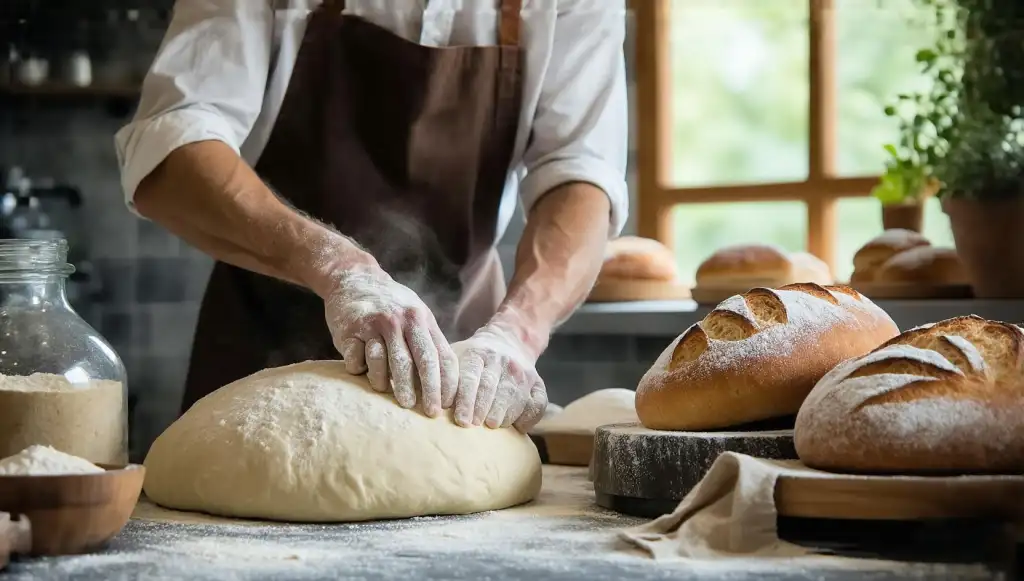The American baking landscape is undergoing a profound transformation as Heritage Grains reclaim their place in artisan kitchens. For Heritage Grains for Artisan Bakers in the US, this represents more than a trend - it's a renaissance of flavor, nutrition, and sustainable practices that challenges decades of industrial standardization.

Before industrialized agriculture dominated American fields, regional varieties of Heritage Grains like Turkey Red Wheat and Sonora White Flour wheat thrived across microclimates. These Ancient grains developed complex flavor profiles through natural selection, with emmer offering nutty depth and einkorn delivering buttery notes now prized by discerning bakers.
The Heritage Grains Initiative's 2022 census identified 137 nearly-extinct North American grain varieties being revived through partnerships between small farms and Heritage Grains for Artisan Bakers in the US. Maine's Maine Grains has successfully reintroduced 19th-century varieties like Marquis Wheat, demonstrating the commercial viability of historical grains when paired with Local sourcing networks.
USDA data reveals that acreage dedicated to Heritage Grains has grown 320% since 2015, with the Artisan Grain Collaborative reporting 84% of member bakeries now sourcing at least one heritage variety. This resurgence correlates with consumer demand - a 2023 NielsenIQ study showed 62% of shoppers will pay premium prices for bread made with Ancient grains.
Nutritional analyses from Kansas State University confirm that heritage wheat varieties contain 18-22% more antioxidants and 15% higher mineral content than modern counterparts. Their deeper root systems also make them drought-resistant - a critical advantage as climate change impacts conventional wheat yields.
Leading bakeries like San Francisco's The Mill and Vermont's Elmore Mountain Bread have built entire menus around Heritage Grains, with spelt sourdoughs developing caramel notes during extended fermentation and Red Fife wheat yielding loaves with distinctive malty aromas. These complex flavor profiles allow Heritage Grains for Artisan Bakers in the US to command 25-40% price premiums according to IBISWorld bakery sector data.
Beyond taste, medical research published in the Journal of Nutritional Science shows that heritage wheat varieties have 30% lower gluten reactivity for sensitive individuals, while their higher fiber content supports gut health - benefits increasingly highlighted in Local sourcing marketing campaigns.
Working with Heritage Grains requires reevaluating conventional techniques. North Dakota State University's baking lab found that heritage wheat flours demand 15-20% longer bulk fermentation times and 5-10% higher hydration levels. Their variable protein structures - while nutritionally superior - necessitate adjusted kneading methods to develop proper dough strength.
Innovative bakeries are meeting these challenges through hybrid approaches. Portland's Tabor Bread combines heritage and modern flours in precise ratios, while Chicago's Hewn Bakery uses extended cold fermentation to enhance flavor development in 100% heritage grain loaves.
The Local sourcing movement has become integral to the heritage grain revival. Wisconsin's Lonesome Stone Milling coordinates direct partnerships between 27 organic farms and 43 bakeries, creating transparent networks where bakers can specify growing conditions and milling preferences for their Heritage Grains.
These relationships yield economic benefits beyond quality control. A 2023 Farm Credit East report showed heritage grain farmers earn $0.38-$0.52 more per pound than conventional wheat growers when selling through Local sourcing channels, while bakeries reduce ingredient costs by 12-18% through direct purchasing agreements.
The Rodale Institute's 30-year farming systems trial demonstrates that Heritage Grains require 45% less synthetic nitrogen while increasing soil organic matter by 2.8% annually. When combined with Local sourcing distribution, the carbon footprint of heritage grain flour drops 62% compared to commercial wheat according to Cornell University's lifecycle analysis.
Market projections suggest this sector will grow 22% annually through 2028, with Technavio forecasting the US heritage grain market to reach $1.7 billion. This growth is driven by both consumer demand and the economic viability created by direct farm-bakery partnerships.

Heritage Grains are open-pollinated varieties cultivated before 1950, with deeper root systems, superior nutritional profiles, and distinctive flavors compared to modern hybrid wheat developed for industrial baking.
Absolutely. Start by substituting 25-30% of regular flour with Ancient grains like spelt or einkorn, adjusting hydration by 5-8% and extending fermentation times by 20-30 minutes for optimal results.
The Artisan Grain Collaborative maintains a national directory of farms and mills specializing in Heritage Grains, while regional Local sourcing platforms like FarmMatch connect consumers directly with producers.
The resurgence of Heritage Grains for Artisan Bakers in the US represents more than a return to traditional methods - it's a forward-looking movement combining agricultural biodiversity, nutritional science, and sustainable economics. As consumer awareness grows and Local sourcing networks expand, these ancient varieties are poised to transform American baking from the ground up.
Ethan Wheatley
|
2025.07.29